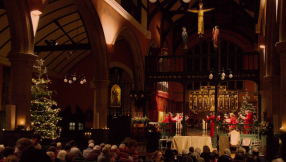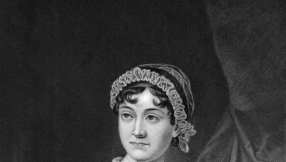
This week is the 60th anniversary of the start of a building project which defined an entire period of history. On Sunday, August 13th 1961, citizens of Berlin woke up to the combined sounds of demolition and construction work along the line of demarcation between the western areas of the city and communist-ruled East Germany.
Since midnight, East German soldiers and police had been tearing up connecting streets and erecting barbed-wire barriers and fences. In direct contravention of post-war agreements, the East German government – backed by the force of the communist USSR – had started a process which would stop free access to the western zones of the city.
Within days, the temporary fencing was being replaced with concrete constructions that would eventually be known as 'The Berlin Wall', with its solid barriers, barbed-wire entanglements, watch towers, machine-gun-swept killing grounds and dog patrols. By the time it was finished, the city was cut in half and the barrier extended round the entire perimeter of the western zones. Berlin had become a sealed unit, reached only by strictly monitored access routes from the west.
Streets and apartment blocks were divided. Underground trains from West Berlin passed through silent, communist-controlled, stations at which trains no longer stopped. Families were separated. The act of dividing a city produced these grotesque characteristics. Here, in metal and stone, was the unmistakable symbol of a divided Cold War Europe. Many died in attempts to cross the Wall and escape communist rule. It was a literal 'Iron [and concrete] Curtain.'
A prisoner of history
Berlin was particularly vulnerable to such action because of the way Germany had been divided after the Second World War. Just as Germany as a whole was divided into 'zones' administered by the victorious Allies (Americans, Soviets, British, French), so the capital city was similarly divided. The complication was that it lay deep within the communist zone and so, its western zones were vulnerable to being besieged. Its successful administration depended on cooperation between the Allies. However, this rapidly broke down as the 'Cold War' started and the western zones of Germany developed into democratic West Germany and the Soviet zone became the (much smaller) communist East Germany.
The government which had initiated the construction of the 'Wall' ruled the so-called 'German Democratic Republic'. However it was anything but 'democratic.' Over the years before the building of the Wall, huge numbers of people living in East Germany (especially professionals) had fled life under communism, by simply walking into West Berlin and taking a train to West Germany. The Wall put a stop to that.
A monument to oppression
East Germany became the most spied-on community in the Eastern Bloc. As I explored in a book I recently wrote on the Soviet secret police and the export of its methods into Eastern Europe after 1945, the East German secret police (the Stasi) operated a vast network of agents and informers. By the time its activities ended, in the late 1980s, it had about 90,000 employees, in a state whose population at that point was only just over sixteen million. Its headquarters occupied a building in East Berlin of over a million square feet and its surveillance archive ran to a billion sheets of paper.
When the once-secret archives were opened after 1990, many Germans (from ex-East Germany) were horrified to discover that trusted family members and friends had been Stasi informers or that they had been under close surveillance. It was a situation memorably retold in the 2006 German film Das Leben der Anderen (The Lives of Others).
After the fall of the Berlin Wall, in 1989, and the end of communist rule in East Germany with unification in 1990, many Stasi members (it is alleged) took jobs as Berlin taxi drivers since they knew the city well. Hence the Berlin joke at the time: "When getting a taxi home, you don't need to tell the driver your address. He already knows where you live!"
The transience of human systems
As I write this column, a lump of concrete is lying in front of me on my desk. It is a chunk of the Berlin Wall. When I started teaching History, at a busy UK comprehensive school in 1981, Europe and the world seemed permanently divided by the Cold War. I taught it as an ongoing geo-political fact of life. But I was wrong. Human systems are transient. In the autumn of 1989, I – along with millions of others – watched the news in astonishment as the Berlin Wall (and the entire Iron Curtain) was breached and the Cold War came to an end.
The chunk of concrete on my desk is a part of it, which came from Berlin in the early 1990s. When I later sought out more of the Wall and its course, in 2011, I was surprised by how little of it remains. Those who demolished it, as the Cold War came to an end, were more focused on removing it and reuniting their city, than on its future potential as a tourist attraction.
Oppressive systems look like they are permanent. They are not. All of those praying today for global justice and working to highlight the plight of people who currently suffer under repressive regimes should take heart from this. Those who bear the weight of oppression in such systems should take heart too. The secret police operatives, the censors, the gaolers, all think they are permanent fixtures. But so did the builders of the Berlin Wall.
However, transience can apply to good systems too. The 60th anniversary of the building of the Berlin Wall reminds us that the values of compassion, freedom, democracy, human rights and the rule of law – that were so terribly denied by the Berlin Wall – cannot be left to defend themselves. In many areas the values that eventually triumphed in 1989 are now under threat more than at any time since then. We live in an increasingly intolerant and divided world. Christians need to be aware of that and to challenge it. That brings us back to walls.
"Something there is that doesn't love a wall..."
In 1914, Robert Frost published a famous poem, entitled "Mending Wall." It tells how, every spring, he and his neighbour rebuilt the dry-stone wall between their properties, because over the intervening months parts of it always collapsed. The poem contains the famous proverb: 'Good fences make good neighbors.' There is a lot of truth in this observation. Boundary disputes between neighbours can be highly divisive. Respecting boundaries can promote harmony.
However, Frost was not entirely convinced that, what we might call, a 'wall mentality' was necessarily always a good thing. As one poetry critic commented, it is not that Frost 'denounces' walls; rather he 'doubts' them. It is this that makes "Mending Wall" so subversive. Walls are meant to give certainty, security and confidence. Doubting them can undermine them and the mentality they represent. There was, Frost reflected, no need for a wall to separate his apple trees from his neighbour's pine woodland. Maintaining the wall each spring had become a habit, as if a wall was, by definition, a good thing. Twice he ponders, as he surveys how it had collapsed in places over the winter: "Something there is that doesn't love a wall" and we are left to ask what we feel about these constructions.
The Berlin Wall is down, but we still live in an 'Age of Walls.' Trump rallies extolled the virtues of the border wall between the USA and Mexico; walls divide Israelis and Palestinians; Hungarians built fences to block asylum seekers; taking back control of borders has dominated recent UK politics. Walls, or their equivalent, are back on the agenda.
Now, I would not contest the need for states to know who is coming in and going out of their jurisdictions and to exercise some measure of control. Security and safety can depend on that. But 'wall mentality' often goes far beyond that. It can become a form of 'siege mentality', rooted in fear of the outsider and those who are 'different'; an outlook that is intolerant and unkind. It can also, at times, be strangely self-defeating when communities seek to keep out the very immigrants who do the unattractive jobs that indigenous citizens actually don't wish to do.
As one humourist, recently wrote, when envisaging a UK farm-gate sign of the not-too-distant future: "Pick your own fruit and vegetables...No, really, PICK YOUR OWN fruit and vegetables!" Managing the movement of people may be necessary, but that newcomers are often needed is undeniable. It is not always an easy thing to keep in balance but it won't go away as an issue.
Assuming the virtue of walls and of sealed borders should not be a given. Walls prompt questions. Robert Frost raised a point we would do well to consider:
"Before I built a wall I'd ask to know what I was walling in or walling out."
So, on the sixtieth anniversary of the building of the Berlin Wall, we should be encouraged by the transience of this particular symbol of oppression, but also recognise the need to defend the values that build healthy and inclusive communities, for their longevity cannot be taken for granted.
As well as this, while we should not denounce all walls as a matter of course, we should maintain a healthy doubt with regard to them. Walls need to be justified. Walls need to be held to account.
Martyn Whittock is an evangelical and a Licensed Lay Minister in the Church of England. As an historian and author, or co-author, of fifty-two books, his work covers a wide range of historical and theological themes. In addition, as a commentator and columnist, he has written for a number of print and online news platforms; has been interviewed on radio shows exploring the interaction of faith and politics; and appeared on Sky News discussing political events in the USA. His recent books include: Trump and the Puritans (2020), Daughters of Eve (2021) and Jesus the Unauthorized Biography (2021). The book mentioned in this column, which explores the history of the Russian secret police and its legacy in the modern world, is: The Secret History of Soviet Russia's Police State: Cruelty, Cooperation and Compromise (2020).













